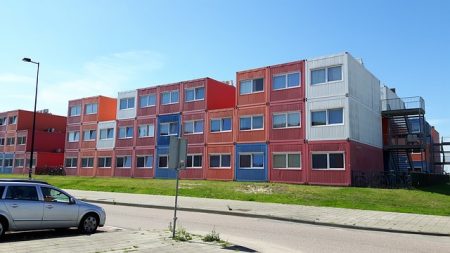- Shipping containers (almost literally) make the world go ’round…
Shipping containers are used daily to ship numerous goods via air, road, rail, and water. Electronics, foodstuffs, medicines, and furniture are among the life essentials that need reliable shipping containers. Industrial products from the Chinese manufacturers, ceramics from Turkey, and Indian rugs are among the goods that travel via water in large containers. Crude oil also needs quality shipping containers that might be attached to a vessel. Containers are the super pillar supporting international trade and fueling economies of scale gains.
Shipping containers have made it possible to have reliable and timely movement of goods across borders. Various shipping routes depend on the container specifications like size. The container technology has eased cargo handling and even stowing.
Shipping containers specifications
Shipping containers vary in size, shape, and type. The dimensions determine the type and quantity of cargo to be ferried from one location to the other. Here are the types of used shipping containers you will get at www.usedconex.com/shipping-containers-in-milwaukee-wi/. Please check the internal length, height, and width before buying any shipping container. External measurements are also vital in gauging the suitability to the shipping container.
Standard dry containers
Standard dry shipping containers will serve all your general purpose needs. You can use these reliable containers to ship your merchandise via road, sea, and rail. The materials used to make these containers are aluminum or steel to maintain strength and protect your goods from harsh natural elements like water, wind, general humidity, and any potential damage. You are likely to get such containers with a length of 45 feet, 40 feet, or 20 feet, while the width is usually 8 feet. Please note that the height is mainly 8.5 feet. The steel shipping containers have giant interior cubes, while aluminum alternatives are wider hence can accommodate a larger payload.
High cube containers
Kindly buy high cube containers if you are shipping goods that demand more height. These shipping containers are taller by 1 foot compared to the standard dry containers. These containers can be 45 feet, 40 feet, or 20 feet long and have same loading capacity as transit trailers. They are recommended for all your shipping needs over short sea routes.
Flexi-tank containers
These are the best choice when shipping non-hazardous products like cooking oil and water. They are usually airtight and collapsible bags suitable for transporting liquids. However, you first fit them in a standard container before shipping. Normally, their capacity ranges from 24000-10000 liters. However, you can get customized containers to suit your shipping needs.
Open-top containers
Sometimes you need a tank that will ease your loading and offloading. An open-top container is all you need to enjoy this privilege. These containers do not have a permanent roof and are used to accommodate goods that are not large enough to warrant use of high cube containers. The roof is removable to ease loading and unloading. However, the top is covered by a sturdy steel roof while in transit to protect your goods from the harsh weather.
Refrigerated containers
There are times when your business needs refrigerated or reefer containers. They are a great choice when handling goods that require controlled airflow, temperature, and humidity. The containers have a refrigeration unit with power supply that controls humidity, airflow, and temperature. This feature makes them ideal for frozen and chilled goods transportation. The goods include seafood, meat, ice cream, dairy, and several types of concentrates.
Insulated containers
These shipping containers have a mix of traits borrowed from refrigerated containers and standard dry shipping containers. Sometimes they are called non-operational refrigerated or thermal containers. The main functionality is the temperature controls that make them a wise choice for transporting fresh produce, pharmaceutical products, and chemicals over long distances. Kindly note that contamination is avoided by installing mechanical compressors in the containers to keep them cool or hot depending on the goods on transit.
There are special needs that might need special purpose containers. Some of the special cargo are explosive materials and weapons. There are containers manufactured to handle such goods. Kindly ensure what you get abides by the ISO 668 set by The International Organization for Standardization (ISO).
Hits: 5












